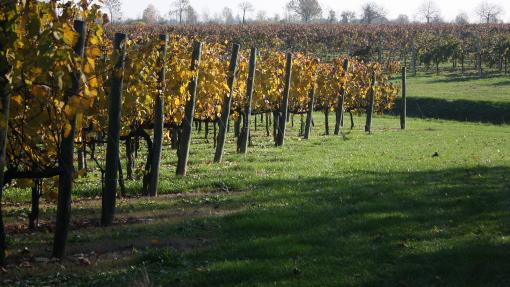One of the main activities VeGAL is targeting with the ENGREEN 2 project is the revitalization of the Lison Pramaggiore DOC Wine Route, established in 1971. VeGAL's task is to enhance the numerous green infrastructure and naturalistic areas (wetlands, waterways, lowland forests) that this area covers.
Here the economy related to the wine sector is very important, not least because of the wineries' focus on organic farming, introduced since the early 1990s and widely practiced here.
In this area where history, nature and wine culture are layered, the intention is to create a network of itineraries and events to discover the territory and green infrastructure, contributing to the protection of the environment and encouraging slow and sustainable forms of tourism. But let's explore the wine route a bit.
The Lison Pramaggiore DOC Wine Route runs from the Lison River to the Tagliamento River and is divided into three zones: the classic zone, the Livenza zone and the Tagliamento zone.
The classic zone is more closely linked to the historic Roman and medieval hinterland and includes wineries located in the localities of Loncon, Belfiore, Pradipozzo, Summaga, Lison, Mazzolada, Levada, Portogruaro and Concordia Sagittaria.
The Livenza area, the richest in wineries, follows the course of this resurgent river starting from Cinto Caomaggiore to its mouth on the sea at Caorle. It covers the territories of the towns of San Stino di Livenza, Annone Veneto, Motta di Livenza, Blessaglia, Pramaggiore, Pravisdomini, and Chions.
The Tagliamento area, straddling the Veneto and Friuli Venezia Giulia regions, covers the towns of San Michele al Tagliamento, Concordia, Latisana, San Giorgio, Alvisopoli, Teglio Veneto, Cordovado, Fossalta di Portogruaro, Vado, Giussago, Villanova, and Lugugnana.
The wines produced in the D.O.C. area. Lison Pramaggiore are characterized by being mainly young, unaged wines, easy to drink and rich in aromas. This is mainly due to the particular composition of the clay and limestone soils, which gives these wines their appreciated characteristics. The flagship of the local production is the Controlled and Guaranteed Denomination of Origin (DOCG) Lison, which takes its name from the ancient Roman village of Lison, in fact historical evidence confirms that already at the time of the Romans the cultivation of vines was already alive in the area.

